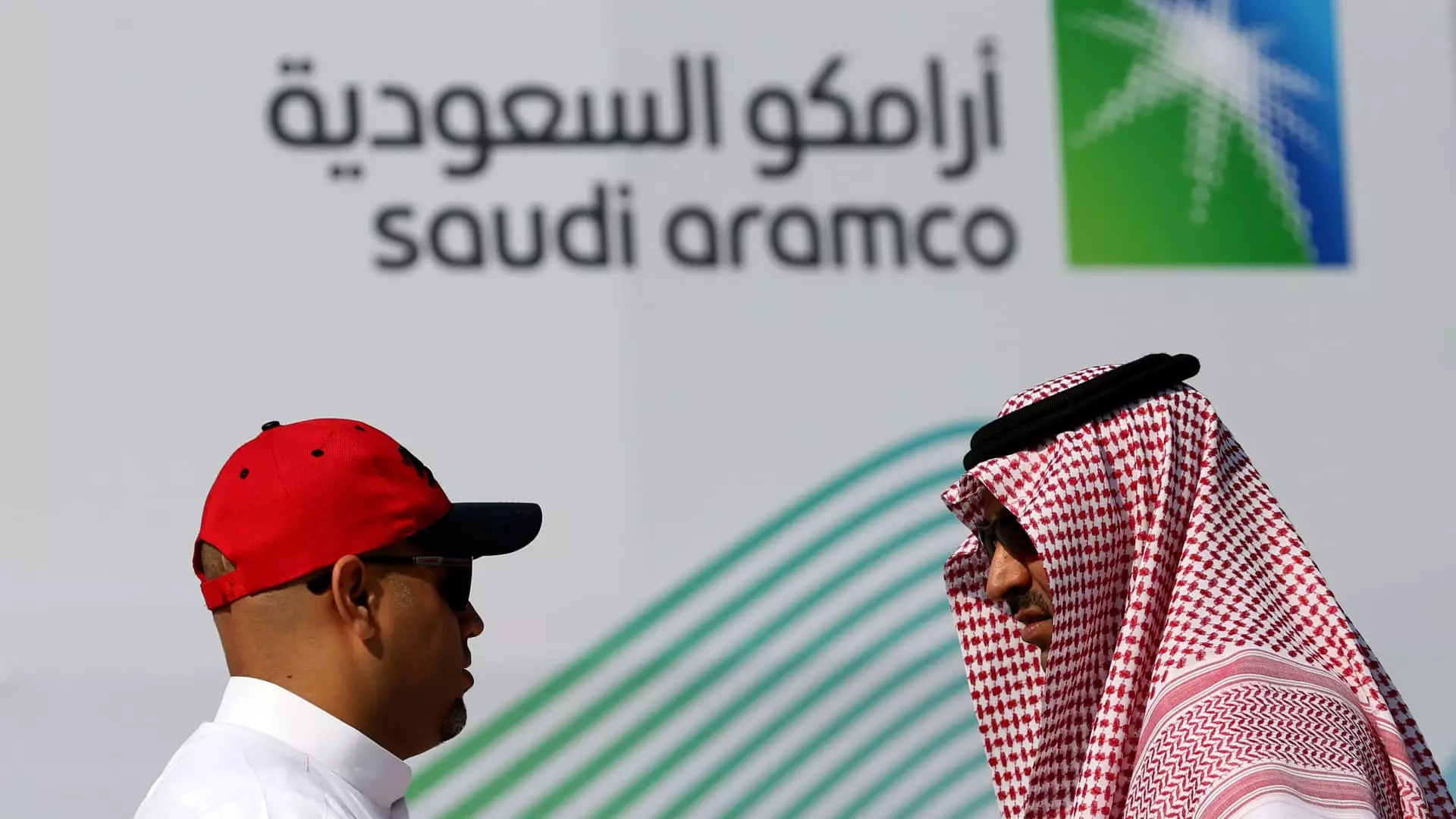In an era where the global energy market is fluctuating wildly, Saudi Aramco’s first-quarter results epitomize the distress signals emanating from the oil sector. A stark 5% drop in net profit—down to $26 billion from $27.3 billion a year earlier—highlights a company in crisis. This decline, though marginally above industry analysts’ estimates, fails to mask the underlying issues that are afflicting not just Aramco, but the broader Saudi economy. In a global landscape punctuated by economic uncertainty, this performance hints at a precarious balance that is beginning to fray.
It is impossible to overlook the implications of reduced free cash flow, which shrank to $19.2 billion—down from $22.8 billion last year. These figures illuminate the troubling trends: lower oil prices and dwindling production levels are not simply blips on the radar; they represent a significant headwind that could destabilize the very foundations of Saudi Arabia’s economy. As a country that heavily relies on oil revenues for economic sustenance, the ramifications can be far-reaching and dire.
A Dividend Cut That Signals Trouble Ahead
The decision to slash performance-linked dividend payouts from an astonishing $10.2 billion to a mere $200 million for the fourth quarter of 2024 is startling. This drastic reduction whispers of deeper financial woes, suggesting that the golden days of oil wealth may be over. Although Aramco’s base dividend did see a year-on-year increase of 4.2%, the dramatic dive in total payouts from $31 billion to $21.36 billion cannot be overlooked. This choice reflects more than mere fiscal prudence; it underscores a company grappling with the reality of a shrinking oil market while trying to appease the demands of a government that is staring down the barrel of a mounting budget deficit.
Aramco’s CEO, Amin Nasser’s insistence on the company’s “reliable and flexible” operations amidst these challenges is commendable, but reaffirms a troubling trend: reliance on unpredictable oil markets—what he refers to as the “impacting oil prices” of global trade dynamics. It feels increasingly disingenuous to tout resilience in the face of declining profitability when the stability promised by such claims becomes increasingly untenable.
The Saudi State: Dependent Yet Vulnerable
The Saudi government is feeling the heat, standing like a house of cards at risk of collapse if oil prices do not rebound. Budget forecasts indicate that for the kingdom to balance its fiscal accounts, crude has to be priced above $90 a barrel. This is an insurmountable challenge given Goldman Sachs’ prediction that oil could plummet to an average of $60 per barrel in 2026. Such estimates evoke concerns not only about the precarious grip Saudi Arabia has on its financial stability, but they also raise ethical considerations. What happens to a nation whose financial model is so heavily tethered to a volatile commodity?
As external agencies continue to downgrade their oil price forecasts and data indicates a potential supply glut, it is the citizens of Saudi Arabia who will ultimately bear the consequences. Predictions suggest a staggering escalation in the budget deficit, potentially reaching $75 billion, pushing the government toward severe austerity measures that may involve cuts to key public services, increased borrowing, or selling off state assets. This outlook on fiscal tightening not only disrupts lives today but also breeds a future of uncertainty for generations to come.
The OPEC+ Conundrum: A Double-Edged Sword
Moreover, Aramco’s participation in the OPEC+ group’s production cuts, a shift ostensibly designed to stabilize oil prices, is a classic example of a double-edged sword. While the intentions of coordinated measures may be noble, the abrupt pivot to increased production amid plummeting prices raises questions: are these strategic decisions benefiting the organization, or are they merely postponing an inevitable crisis? April’s shock announcement of production increases is, in retrospect, a gamble that has backfired, as markets react negatively to speculation rather than facts.
While OPEC+ attempts to navigate this tumultuous sea, the stakes are perilously high—not just for oil producers, but for every economy that is intricately linked to this sector. The ramifications extend far beyond balance sheets and corporate dividends—they threaten socioeconomic stability and geopolitical relations involving oil-rich nations.
Aramco’s latest earnings report serves as a microcosm of the crises facing the global oil market, revealing alarming trends that demand thoughtful analysis and action. As we witness this rollercoaster ride of profits and losses, one has to wonder: is there a way forward for Saudi Arabia, or has the oil industry’s golden era seen its final sunset?


Leave a Reply